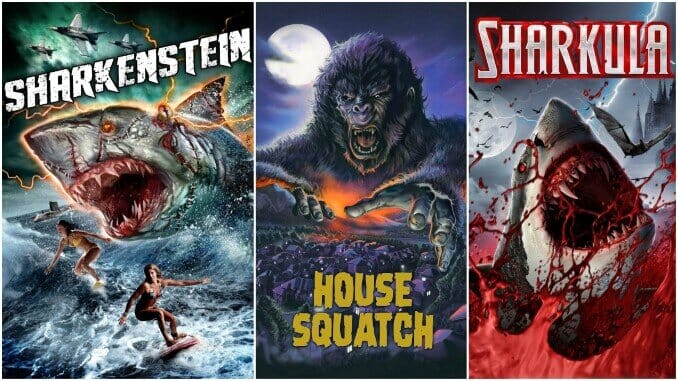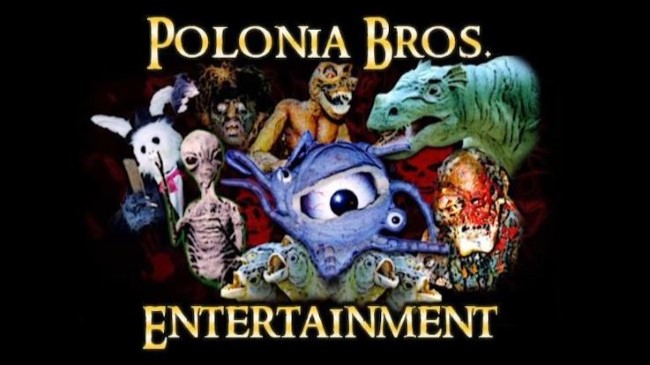Mark Polonia: The Hardest Working Man in the Bad Movie Business
Photos via Polonia Bros. Entertainment
Roughly 20 years ago, as a smartass teenager with a burgeoning appreciation for terrible movies and absurdist internet comedy, I first read a scathing review of a film called Feeders 2. Written in the year 2000 by now-deceased SomethingAwful founder Rich “Lowtax” Kyanka, the comedy review painted Feeders 2 as a new and heretofore undiscovered species of zero-budget sci-fi horror cinema, the worst film that had ever been reviewed by SA to that point. In my mind’s eye, this moment was akin to Feeders 2 entering some kind of immortal canon, a hall of fame for terrible movies that would ultimately enshrine it alongside other obscurely infamous works like Andrew Jordan’s legendarily grungy 1989 Canadian horror flick Things. In the years that followed, other prominent reviewers of lost, terrible cinema such as the Red Letter Media crew have likewise taken their shots at Feeders 2 and its predecessor, spreading awareness of the film as a widely recognized member of the bad movie canon.
Here’s the thing, though: Most filmmakers responsible for a zero-budget disaster on the level of Feeders 2 have a tendency to fade away into obscurity in the years that follow, their brief dalliance in the world of cinema all but forgotten. The guy behind Feeders 2, on the other hand? He directed eight feature films in 2021, and will produce at least six more in 2022. His name is Mark Polonia, and he’s perhaps the hardest working and most prolific man in the bad movie business today. He’s also an oddly inspiring figure to would-be, zero-budget auteurs everywhere, a man who bounced back from the tragic loss of his brother and filmmaking partner to become more prolific than ever. Seemingly nothing can stop this guy—certainly not negative reviews, that’s for certain. Making movies seems to simply be a function of his existence on this planet.
The Films of the Polonia Brothers
Feeders 2, and pretty much every other film to bear the name “Polonia” before 1998, was the product of not only Mark but John Polonia, identical twin brothers from small-town Pennsylvania who dreamed of emulating the grindhouse horror films of their youth, and doing it as a team. As kids, they reportedly received home video equipment and tools for birthdays, obsessed with the prospect of making their own movies from the time Mark first saw Mothra vs. Godzilla as a 5-year-old. Filmmaking was their shared raison d’etre.
The pair were only 18 years old, in fact, when they shot their first commercial feature—in a loose sense of the word—1987’s Splatter Farm, a tale about a necrophiliac old woman living with the corpse of her husband, and (naturally) starring both Polonia boys as well. Splatter Farm, though extremely crude, functions as a near-perfect rubric for everything that would come to define the Polonia Brothers’ style: Very low production values and amateur actors, combined with slightly more competent FX and gore in suburban and rural settings that took advantage of wherever the brothers were able to shoot for a few days at a time. Supreme opportunists, they took advantage of whatever was available to them in order to produce trashy gems like this Splatter Farm sequence, which includes not only an exploding mannequin head but a senior citizen blown to bits by a suggestively placed pipe bomb. The content would be shocking, if it wasn’t also so crudely amateurish that it ultimately loops all the way back around to “hilarious.” Even when dealing with disturbing material, a Polonia Brothers film is so earnest in its attempt that it somehow reads as bizarrely wholesome. Their vintage work in particular has that sort of effortless “good bad” quality to it.
Together, the pair would go on to produce, direct and edit almost 30 films together in the subsequent two decades following Splatter Farm, including 1996’s particularly infamous Feeders and its 1998, Christmas-themed sequel Feeders 2: Slay Bells. The former was seen by far more viewers than one might expect, as the pathetic “alien puppets attack” flick was picked up by the Blockbuster Video chain in the wake of Independence Day’s massive success, ultimately becoming the chain’s most rented independent film of 1996 in the process. If you thought such success might somehow translate to bigger budgets for a film like Feeders 2, you would be sadly mistaken—this is a film that ends with a scene involving Santa Claus personally gunning down the aliens with a handheld laser pistol that fires not digitally rendered blasts of light but hand-drawn squibs of laser that look like they were freehanded in MS Paint. The entire sequence is awe-inspiringly terrible.
I can only imagine that at the time, the Polonia Brothers must have viewed themselves as contemporaries of the likes of Sam Raimi or Peter Jackson; fellow shoestring visionaries who wanted to use their boundless enthusiasm in service of crafting stylish, schlocky, gross-out thrills aimed at their horror-loving peers. But where the likes of Raimi had an innate genius for shot composition and connections with actors and technicians who would go on to become Hollywood icons, the Polonia Brothers had…access to houses over long weekends in rural Pennsylvania, and a network of friends who were happy to help, but none who were destined to go on to fame and fortune in the industry. Watching the films they produced in this era, one is almost tempted to label them as pioneers of “bad on purpose” filmmaking, but Mark Polonia insists that the intention has always been (and remains) to do the best he can with the extremely modest resources available to him.
-

-

-

-

-

-

-

-

-

-

-

-

-

-

-

-

-

-

-

-

-

-

-

-

-

-

-

-

-

-

-

-

-

-

-

-

-

-

-

-










































